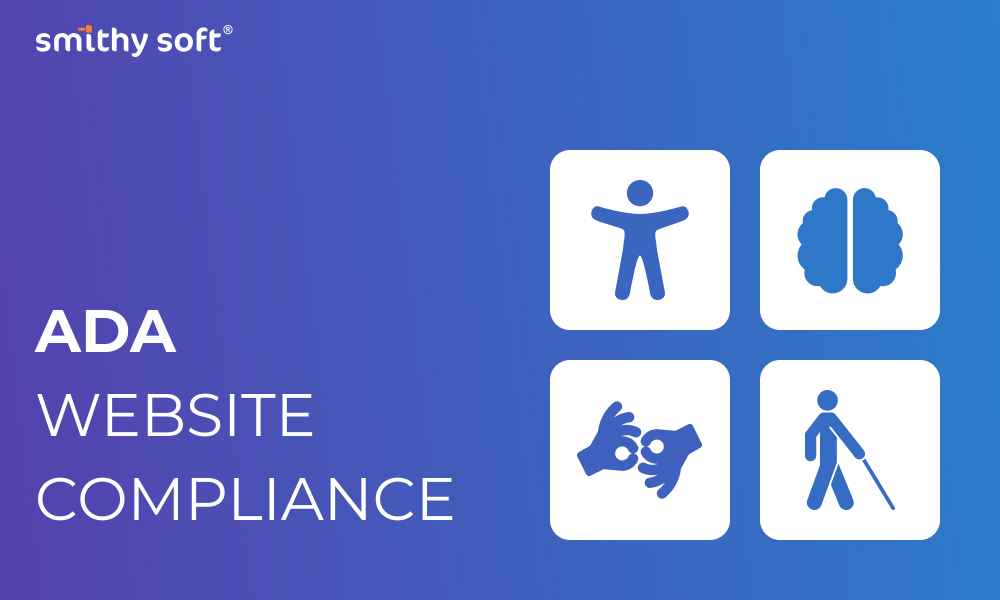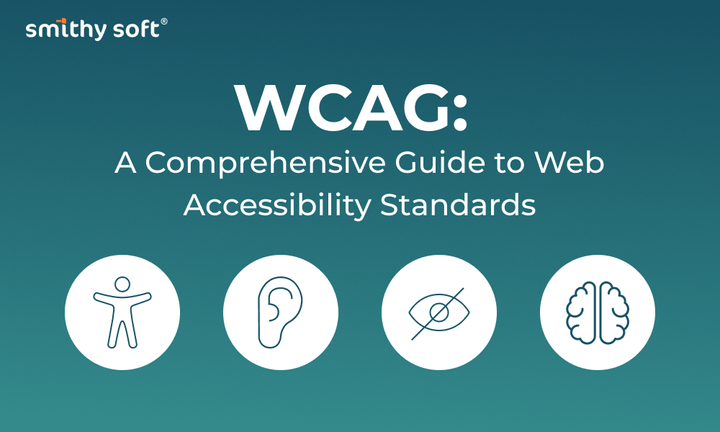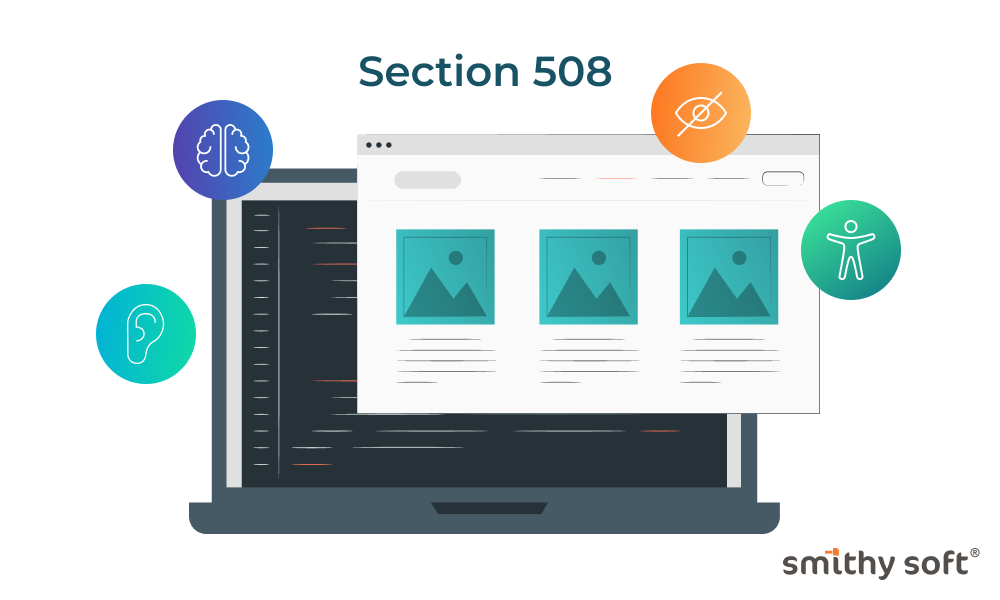Understanding ADA Website Compliance: A Guide to Digital Accessibility

Nowadays, digital accessibility has become a fundamental principle for all companies that understand that user needs always come first. In this sense, the key aspect is accessibility and equal access for all people, eliminating any form of discrimination on any grounds.
35 years ago, in 1990, the Americans with Disabilities Act (ADA) became a law. And it is America’s most important law regarding accessibility and civil rights for people with disabilities, including web accessibility.
As web interaction has become fundamental to our daily lives, web accessibility is essential. Having a website that is inaccessible to certain users, that is not ADA compliant, and that creates unfair digital barriers for people with disabilities, will be a major problem for any company operating online today.
The problem is also a legal one, as the number of lawsuits related to website non-compliance with ADA requirements continues to rise. According to UsableNet's report, 4,065 lawsuits were filed in 2023 due to web accessibility issues. This represents a 42% increase compared to 2022 and an astonishing nearly 400% (!) increase since 2017. A similar upward trend persisted throughout 2024, with thousands of lawsuits filed against owners of fully or partially inaccessible websites.
So, digital accessibility and compliance with ADA requirements are very important.
Why is website accessibility important?
Inaccessible web content means that people with disabilities are deprived of equal access to information. An inaccessible website can exclude people just as much as steps at the entrance to a physical location.
In recent years, numerous services have moved online, and people rely on websites for all aspects of daily life more than ever before.
People with disabilities navigate the web in a variety of ways. People who are blind may use screen readers, which are devices that speak the text that appears on a screen. People who are deaf or hard of hearing may use captioning. And people whose disabilities affect their ability to grasp and use a mouse may use voice recognition software to control their computers and other devices with verbal commands.
If the ways that websites are designed and set up can create unnecessary barriers that make it difficult or impossible for people with disabilities to use websites, such websites are not accessible.
Examples of Website Accessibility Barriers (by www.ada.gov)
- Poor color contrast. People with limited vision or color blindness cannot read text if there is not enough contrast between the text and background (for example, light gray text on a light-colored background).
- Use of color alone to give information. People who are color-blind may not have access to information when that information is conveyed using only color cues because they cannot distinguish certain colors from others. Also, screen readers do not tell the user the color of text on a screen, so a person who is blind would not be able to know that color is meant to convey certain information (for example, using red text alone to show which fields are required on a form).
- Lack of text alternatives (“alt text”) on images. People who are blind will not be able to understand the content and purpose of images, such as pictures, illustrations, and charts, when no text alternative is provided. Text alternatives convey the purpose of an image, including pictures, illustrations, charts, etc.
- No captions on videos. People with hearing disabilities may not be able to understand information communicated in a video if the video does not have captions.
- Inaccessible online forms. People with disabilities may not be able to fill out, understand, and accurately submit forms without things like:
- Labels that screen readers can convey to their users (such as text that reads “credit card number” where that number should be entered);
- Clear instructions; and
- Error indicators (such as alerts telling the user a form field is missing or incorrect).
- Mouse-only navigation (lack of keyboard navigation). People with disabilities who cannot use a mouse or trackpad will not be able to access web content if they cannot navigate a website using a keyboard.
Understanding ADA requirements
When they talk about the ADA requirements, they usually refer to two sources. First, the text of the ADA, also referred to as the ADA statute, passed by Congress in 1990 and later amended. Second, regulations developed by the Department of Justice that state/local governments and many businesses must follow to ensure that they do not discriminate against people with disabilities.
The latest such changes were made public on April 24, 2024, when the Federal Register published the Department of Justice’s (Department) final rule updating its regulations for Title II of the Americans with Disabilities Act (ADA).
The rule sets technical requirements for state and local governments to follow to make sure that their websites and mobile apps are accessible to people with disabilities. This webinar provides a summary of the rule: https://youtu.be/hkhIGSvJC2o
The ADA prohibits discrimination on the basis of disability in employment, state and local government, public accommodations, commercial facilities, transportation, and telecommunications. It also applies to the United States Congress.
To be protected by the ADA, one must have a disability or have a relationship or association with an individual with a disability. An individual with a disability is defined by the ADA as a person who has a physical or mental impairment that substantially limits one or more major life activities, a person who has a history or record of such an impairment, or a person who is perceived by others as having such an impairment. The ADA does not specifically name all of the impairments that are covered.
Who needs to comply with the ADA?
There’s a common misconception that the ADA only applies to very large corporations, but that’s a serious mistake. All types and all sizes of businesses have to comply with ADA legislation, as it pertains to their customers and their employees. Organizations exempt from complying with the ADA are those with fewer than 15 employees. That means that the ADA affects:
- Places of entertainment like theaters, movie theaters, and concert halls
- Restaurants and eateries
- Small and medium businesses of all types
- Large enterprises
- Banks
- Retail stores
- Real estate agencies
- Colleges
- Local government offices, employment agencies, and labor unions
- Website owners
When the ADA Requires Web Content to be Accessible
The Americans with Disabilities Act applies to state and local governments (Title II) and businesses that are open to the public (Title III).
Ultimately, all websites should be ADA compliant and inclusive to everyone – even if the ADA standards don’t apply to you and your organization.
Because ADA applies to all electronic information and technology, i.e., the World Wide Web and all its websites, ADA compliance applies to virtually all businesses and web developers.
Some examples include:
- State and local government organizations
- Private organizations with 15 employees or more
- Places of business that are considered a place of public accommodation
- by Title III
- Organizations that work for the public’s benefit (e.g., public transportation, schools, restaurants, bakeries, grocery stores, hotels, banks, accountant offices, law offices, social service centers, gyms, healthcare providers, the United States Postal Service, etc.)
How to Meet ADA Standards?
The key requirements of the Department of Justice (DOJ) Web and Mobile Accessibility Rules, released in April 2024, are as follows:
Requirement: The Web Content Accessibility Guidelines (WCAG) Version 2.1, Level AA is the technical standard for state and local governments’ web content and mobile apps.
You can find more information about why the Department picked WCAG 2.1, Level AA as the technical standard for state and local governments’ web content and mobile apps in the rule in the section of the appendix called “Technical Standard—WCAG 2.1 Level AA.”
Learn more about WCAG in our blog: WCAG: WCAG: A Comprehensive Guide to Web Accessibility Standards
Requirement: State and local governments’ web content usually needs to meet WCAG 2.1, Level AA.
The rule applies to web content that a state or local government provides or makes available. This includes when a state or local government has an arrangement with someone else who provides or makes available web content for them.
Example: If a county web page lists the addresses and hours of operation for all county parks, that web page must meet WCAG 2.1, Level AA even if a local web design company made the web page and updates it for the county.
Requirement: State and local governments’ mobile apps usually need to meet WCAG 2.1, Level AA
The rule applies to mobile apps that a state or local government provides or makes available. This includes when a state or local government has an arrangement with someone else who provides or makes available a mobile app for them.
Example: If a city lets people pay for public parking using a mobile app, that mobile app must meet WCAG 2.1, Level AA even if the app is run by a private company.
Exceptions: In limited situations, some kinds of web content and content in mobile apps do not have to meet WCAG 2.1, Level AA.
It is important that state and local governments can prioritize so they can choose the most important content - like current or commonly used information - to make accessible to people with disabilities quickly.
There are limited exceptions for some kinds of content that are not as frequently used or that may be particularly hard for state and local governments to address right away.
If an exception applies to certain content, it means that content would not have to meet WCAG 2.1, Level AA.
Examples of exceptions:
1. Archived web content
State and local governments’ websites often include a lot of content that is not currently used. This information may be outdated, not needed, or repeated somewhere else. Sometimes, this information is archived on the website.
Web content that meets all four of the following points would not need to meet WCAG 2.1, Level AA:
- The content was created before the date the state or local government must comply with this rule, or reproduces paper documents or the contents of other physical media (audiotapes, film negatives, and CD-ROMs for example) that were created before the government must comply with this rule, AND
- The content is kept only for reference, research, or recordkeeping, AND
- The content is kept in a special area for archived content, AND
- The content has not been changed since it was archived.
Example: A water quality report from 1998 that a state has stored in an “archive” section of its website and has not updated would probably fall under the exception. The exception would also probably apply to handwritten research notes or photos that go with the 1998 water quality report that the state scans and posts to its website in the archive section.
2. Preexisting conventional electronic documents
Some state and local governments have a lot of old documents, like PDFs, on their website. It can sometimes be hard to make these documents meet WCAG 2.1, Level AA.
Documents that meet both of the following points usually do not need to meet WCAG 2.1, Level AA, except in some situations:
- The documents are word processing, presentation, PDF, or spreadsheet files; AND
- They were available on the state or local government’s website or mobile app before the date the state or local government must comply with this rule.
Example: This exception would probably apply to a PDF flyer for a Thanksgiving Day parade posted on a town’s website in 2018, or a Microsoft Word version of a sample ballot for a school board election posted on a school district’s website in 2014.
When the exception does not apply: Documents that are currently being used to apply for, access, or participate in a state or local government’s services, programs, or activities do not fall under the exception even if the documents were posted before the date the government has to comply with the rule.
3. Content posted by a third party where the third party is not posting due to contractual, licensing, or other arrangements with a public entity
Third parties sometimes post content on state and local governments’ websites or mobile apps. Third parties are members of the public or others who are not controlled by or acting for state or local governments. The state or local government may not be able to change the content third parties post.
Content that is posted by third parties on a state or local government’s website or mobile app would not need to meet WCAG 2.1, Level AA.
Example: A message that a member of the public posts on a town’s online message board would probably fall under the exception.
4. Individualized documents that are password-protected
State and local governments sometimes use password-protected websites to share documents that are for specific individuals, like a water or tax bill. It might be hard to make all of these documents accessible right away for everyone, and there might not be a person with a disability who needs access to these documents.
Documents that meet all three of the following points do not need to meet WCAG 2.1, Level AA:
- The documents are word processing, presentation, PDF, or spreadsheet files, AND
- The documents are about a specific person, property, or account, AND
- The documents are password-protected or otherwise secured.
Example: A PDF version of a water bill for a person’s home that is available in that person’s secure account on a city’s website would probably fall under the exception. However, the exception does not apply to the city’s website itself.
5. Preexisting social media posts
For many state and local governments, making all of their past social media posts accessible may be impossible. There also may be very little use to making these old posts accessible because they were usually intended to provide updates about things happening at the time they were posted in the past.
For these reasons, social media posts made by a state or local government before the date the state or local government must comply with this rule do not need to meet WCAG 2.1, Level AA.
Example: This exception would apply to a 2017 social media post by a city’s sanitation department announcing that trash collection would be delayed due to a snowstorm.
How to Make Web Content Accessible to People with Disabilities?
Examples of what businesses should do to make websites accessible include (but are not limited to) the following practices:
- Color contrast in text. Sufficient color contrast between the text and the background allows people with limited vision or color blindness to read text that uses color.
- Text cues when using color in text. When using text color to provide information (such as red text to indicate required form fields), including text cues is important for people who cannot perceive the color. For example, include the word “required” in addition to red text for required form fields.
- Text alternatives (“alt text”) in images. Text alternatives convey the purpose of an image, including pictures, illustrations, charts, etc. Text alternatives are used by people who do not see the image, such as people who are blind and use screen readers to hear the alt text read out loud. To be useful, the text should be short and descriptive.
- Video captions. Videos can be made accessible by including synchronized captions that are accurate and identify any speakers in the video.
- Online forms. Labels, keyboard access, and clear instructions are important for forms to be accessible. Labels allow people who are blind and using screen readers to understand what to do with each form field, such as by explaining what information goes in each box of a job application form. It is also important to make sure that people who are using screen readers are automatically informed when they enter a form field incorrectly. This includes clearly identifying what the error is and how to resolve it (such as an automatic alert telling the user that a date was entered in the wrong format).
- Text size and zoom capability. People with vision disabilities may need to be able to use a browser’s zoom capabilities to increase the size of the font so they can see things more clearly.
- Headings. When sections of a website are separated by visual headings, building those headings into the website’s layout when designing the page allows people who are blind to use them to navigate and understand the layout of the page.
- Keyboard and mouse navigation. Keyboard access means users with disabilities can navigate web content using keystrokes, rather than a mouse.
- Checking for accessibility. Automated accessibility checkers and overlays that identify or fix problems with your website can be helpful tools, but like other automated tools such as spelling or grammar checkers, they need to be used carefully. A “clean” report does not necessarily mean everything is accessible. Also, a report that includes a few errors does not necessarily mean there are accessibility barriers. Pairing a manual check of a website with the use of automated checkers can give you a better sense of the accessibility of your website.
- Reporting accessibility issues. Websites that provide a way for the public to report accessibility problems allow website owners to fix accessibility issues.
Use of Conforming Alternate Versions
Sometimes a state or local government tries to have two versions of the same web content or content in a mobile app: one version that is not accessible and another version that is accessible and provides all the same information and features. The second version is called a “conforming alternate version.”
Usually state and local governments should not have a main web page that is inaccessible and a separate accessible version of the same content, because people with disabilities should get equal access to that content on the same page.
Under the rule, state and local governments may use conforming alternate versions as an alternative to inaccessible content only in very limited circumstances. State and local governments are allowed to do this only when there is a technical or legal limitation that prevents inaccessible web content or mobile apps from being made accessible.
For more information about conforming alternate versions and when they are allowed, see the final rule in the section of the appendix called “Section 35.202 Conforming Alternate Versions.”
How Long State and Local Governments Have to Comply with the Rule?
State and local governments must make sure that their web content and mobile apps meet WCAG 2.1, Level AA within two or three years of when the rule was published on April 24, 2024, depending on their population.
CONCLUSIONS
Presenting a website that does not comply with the ADA presents people with certain disabilities with unjust digital barriers. Discrimination is both morally wrong and a violation of federal law. Therefore, those with non-compliant websites open themselves up to receiving ADA website compliance demand letters. Additionally, owners of non-compliant websites can potentially face more significant legal recourse, such as ADA website compliance lawsuits.
Web agencies need to keep ADA title III requirements in mind, too. If a client gets sued for having a non-accessible website, that client will turn to the agency that designed it. The client could insist on getting their money back, ruin that agency’s reputation for failing to comply with legislation, or even sue the agency for having created a non-ADA-compliant website.
If you want to find out if your website is ADA-compliant, conduct an audit, and most importantly, fix the issues, contact SmithySoft: we offer a full range of Accessibility Analysis services!


